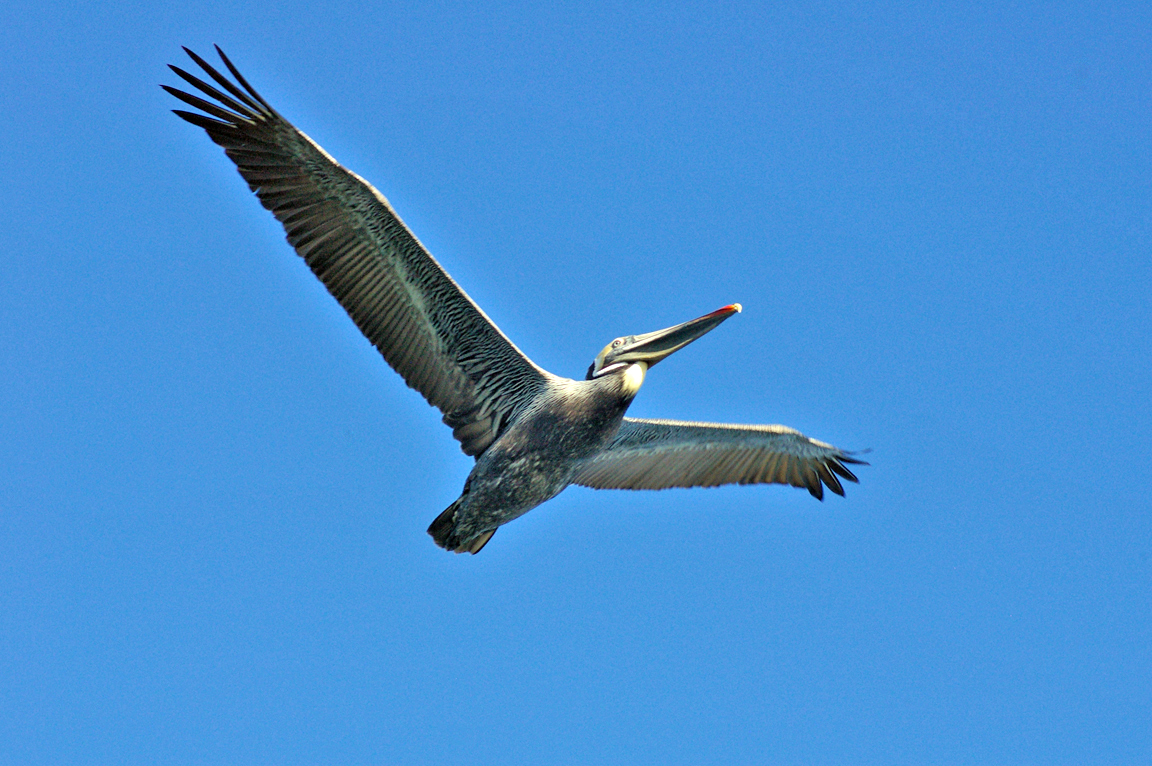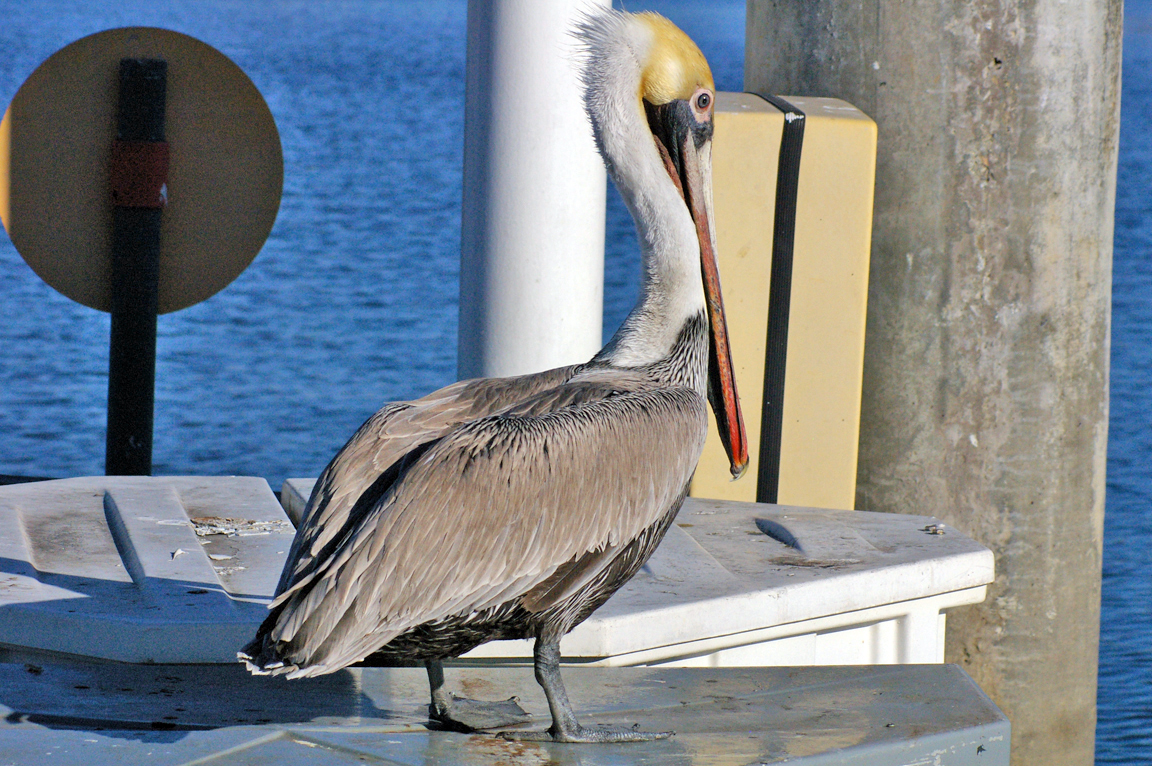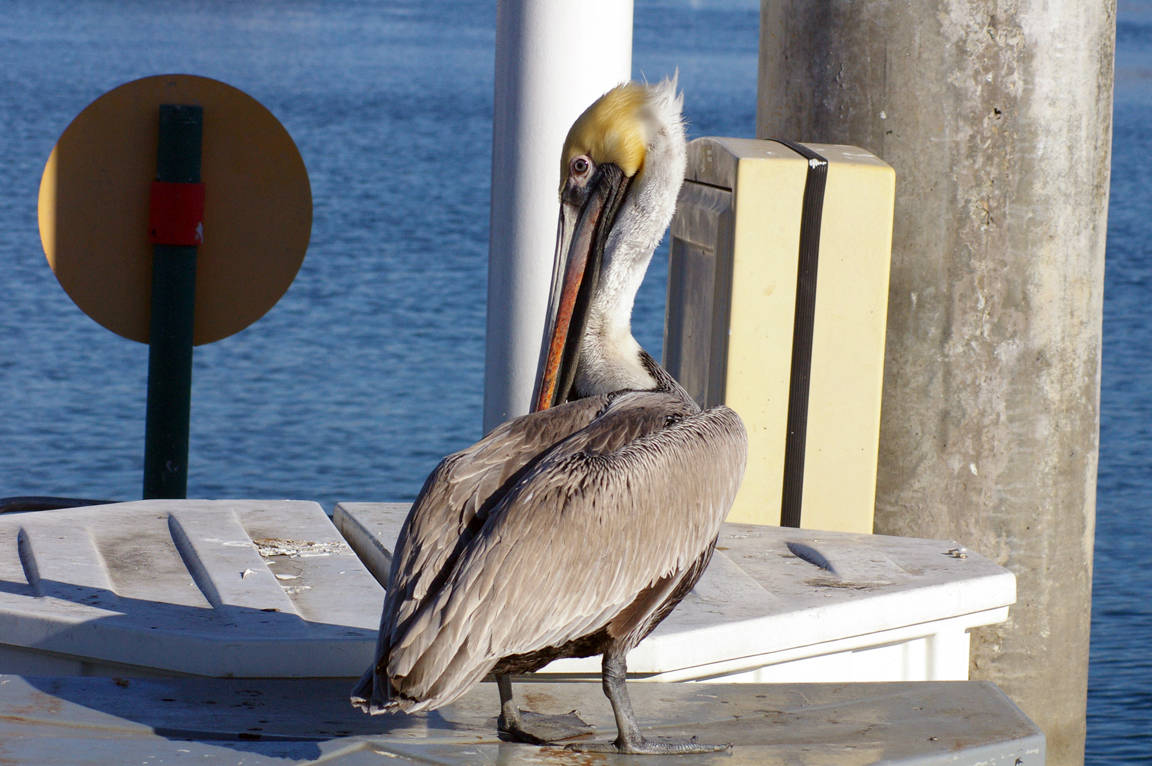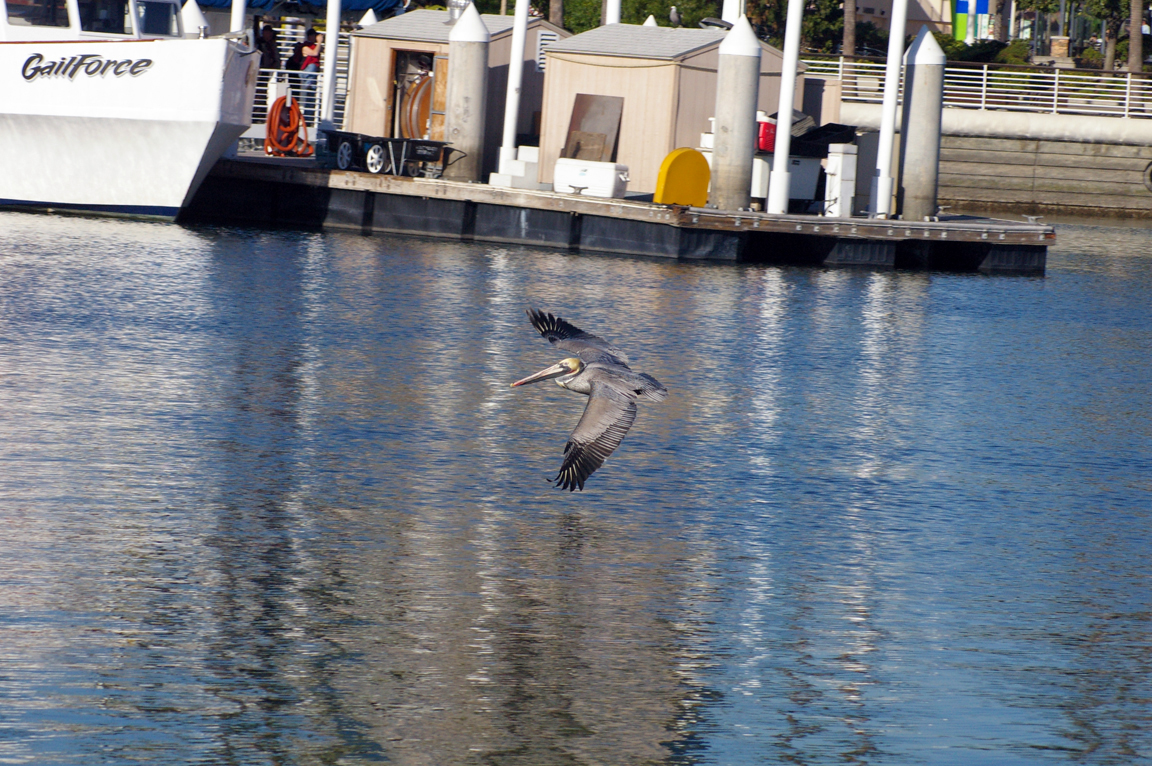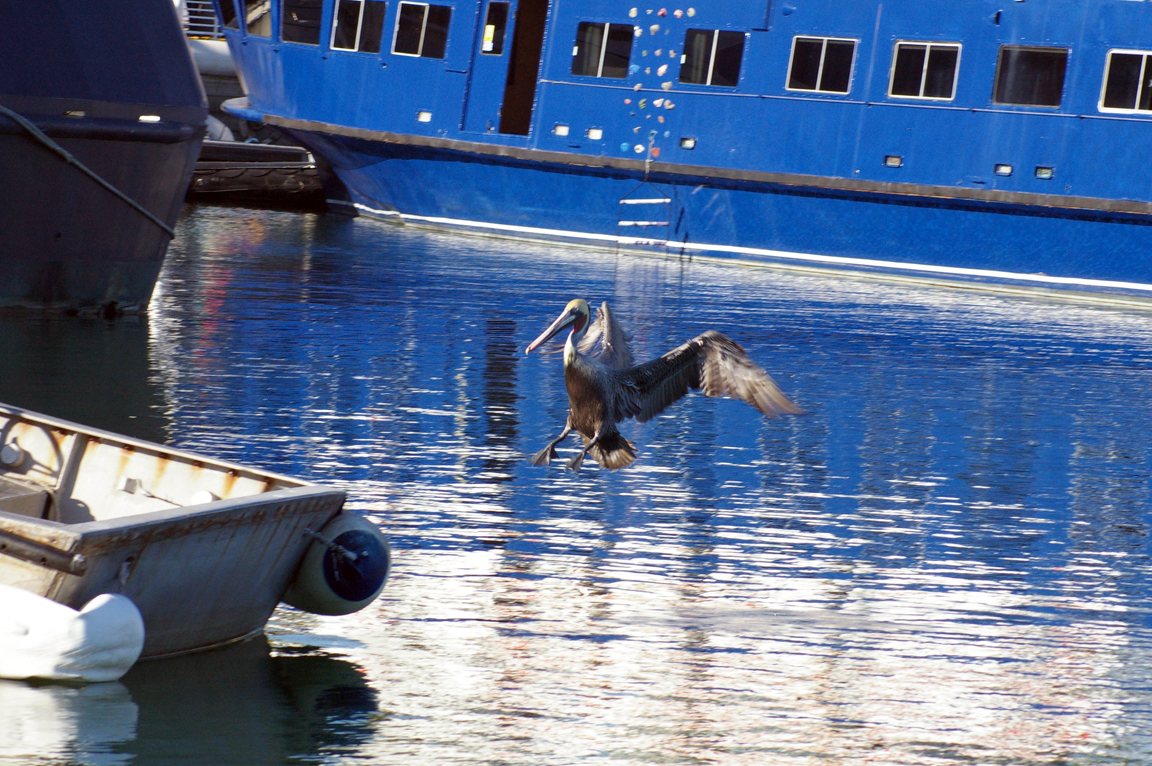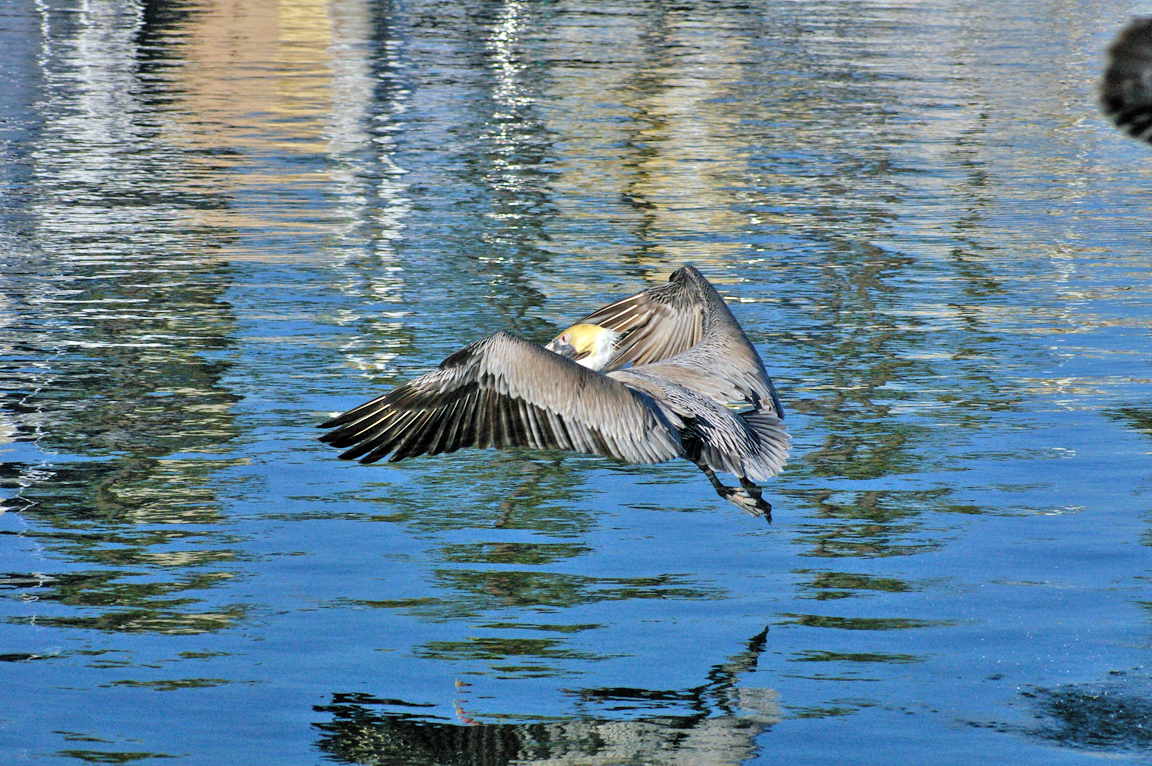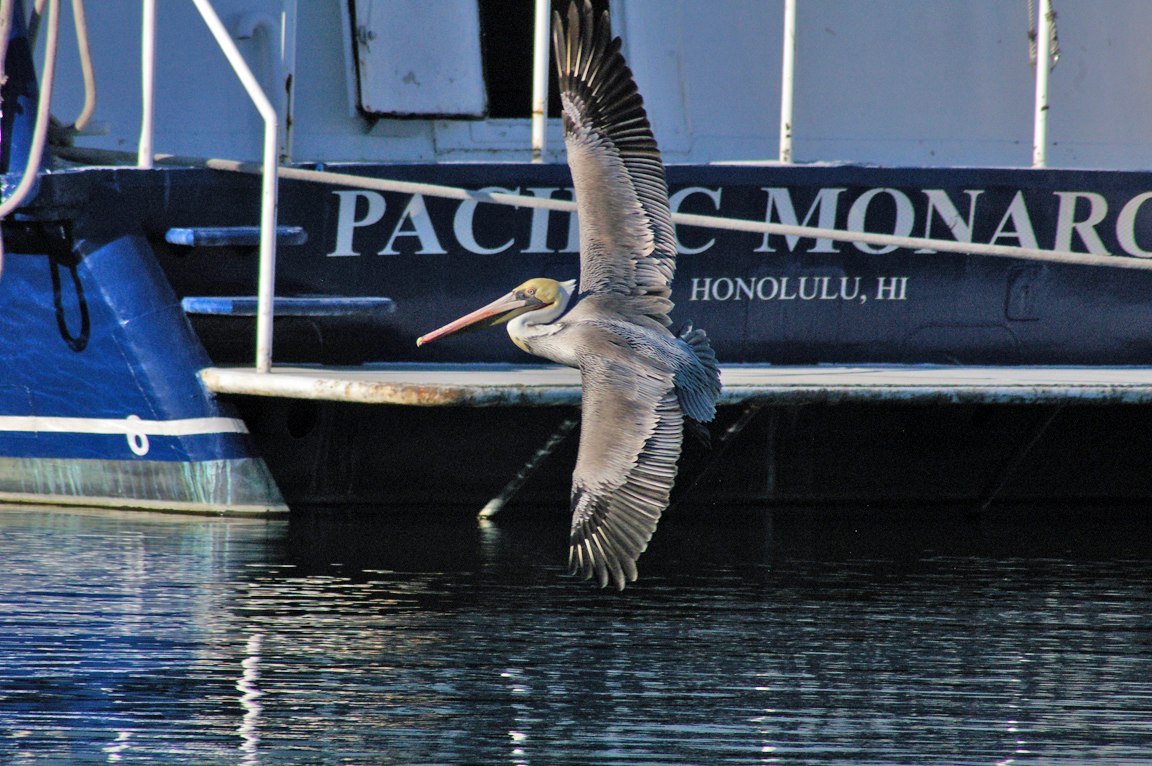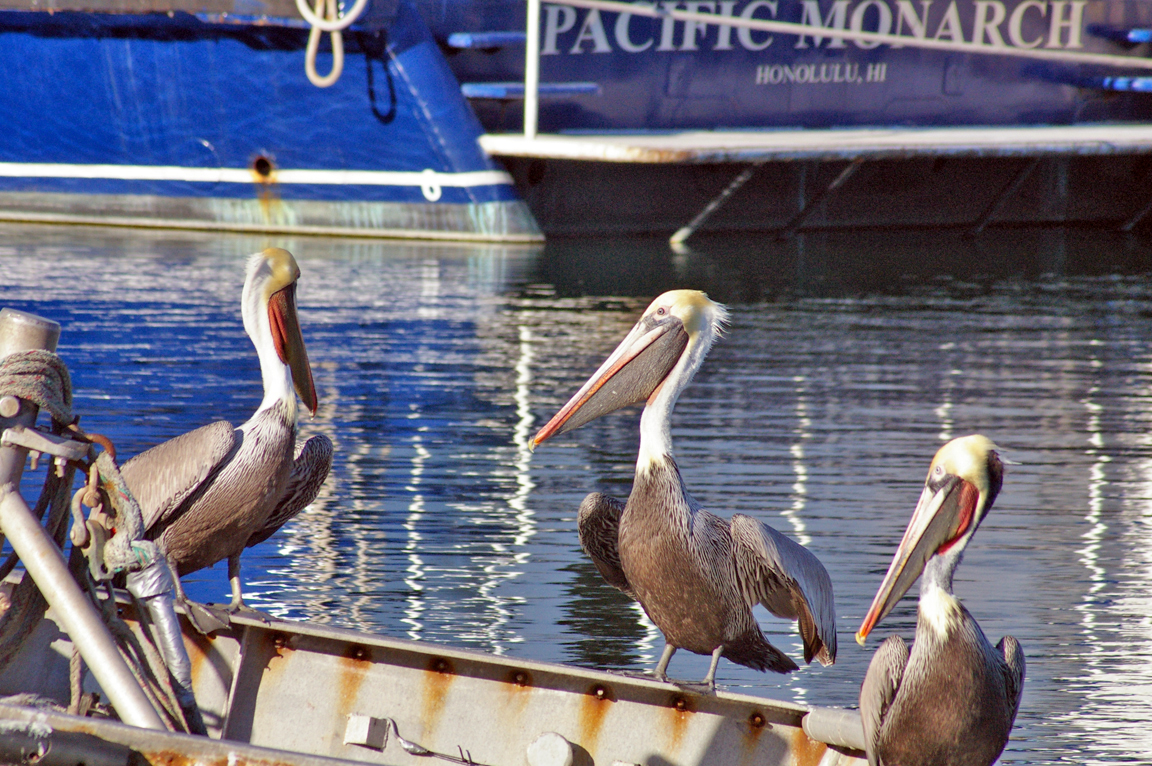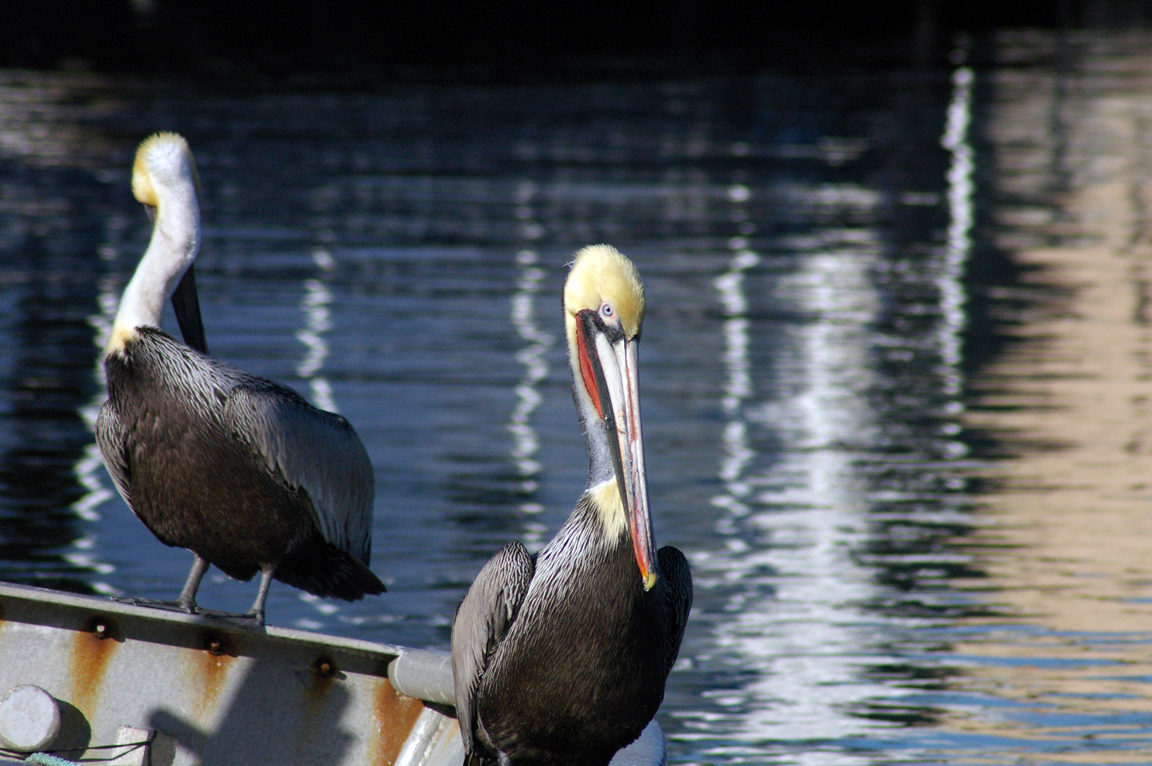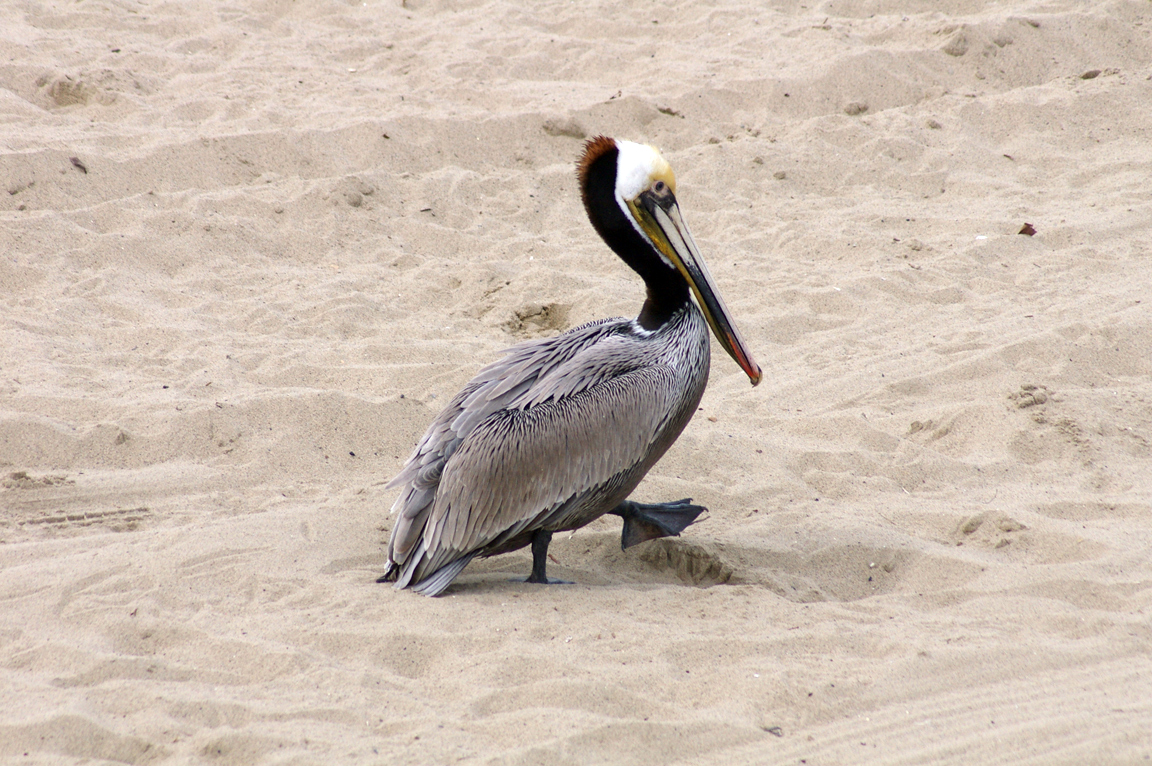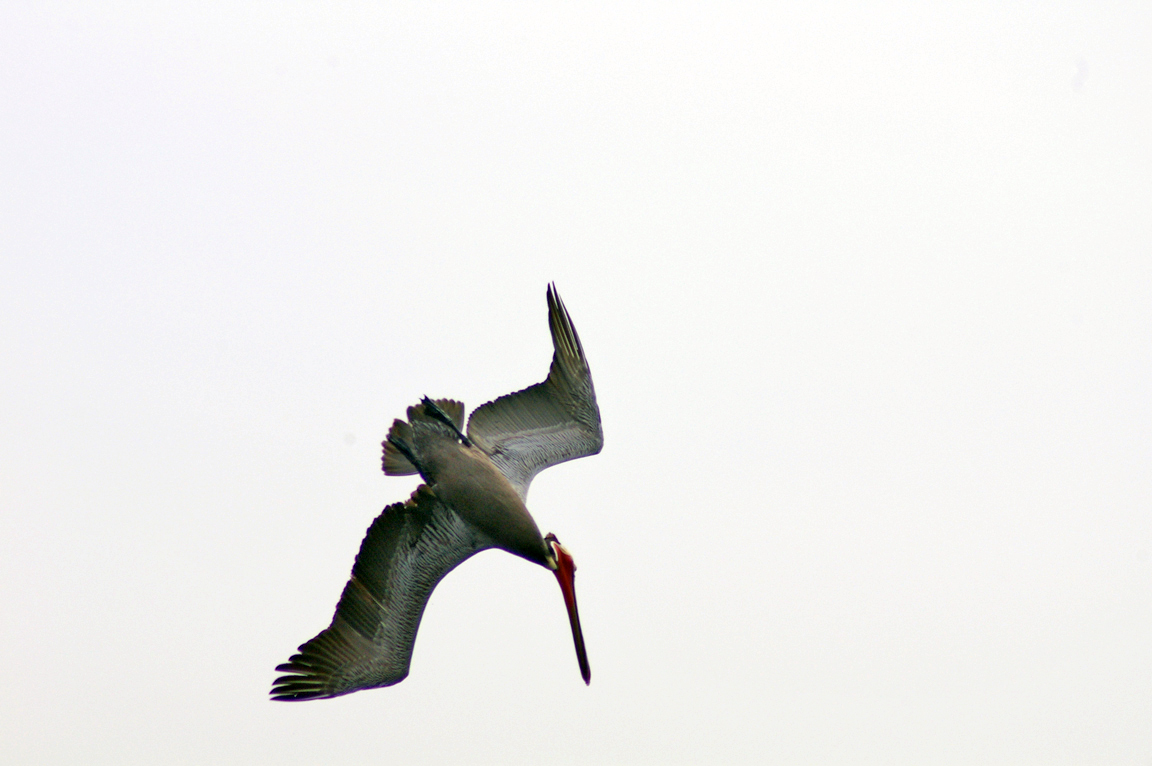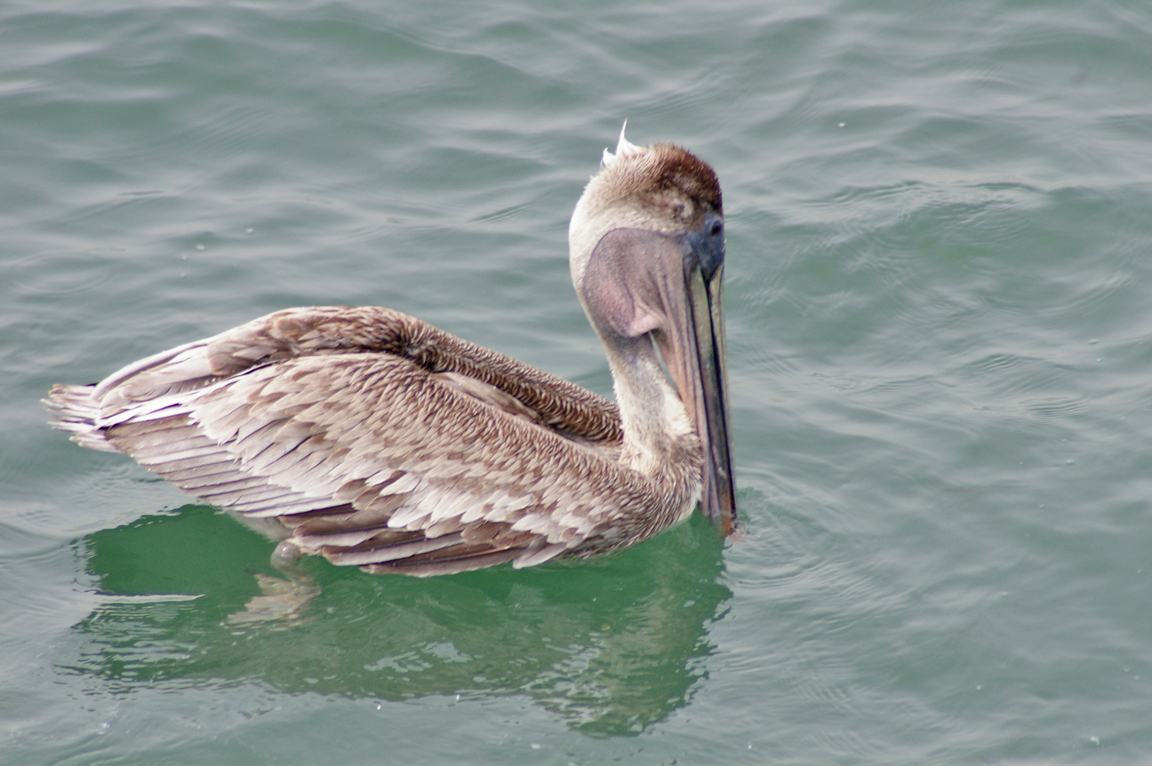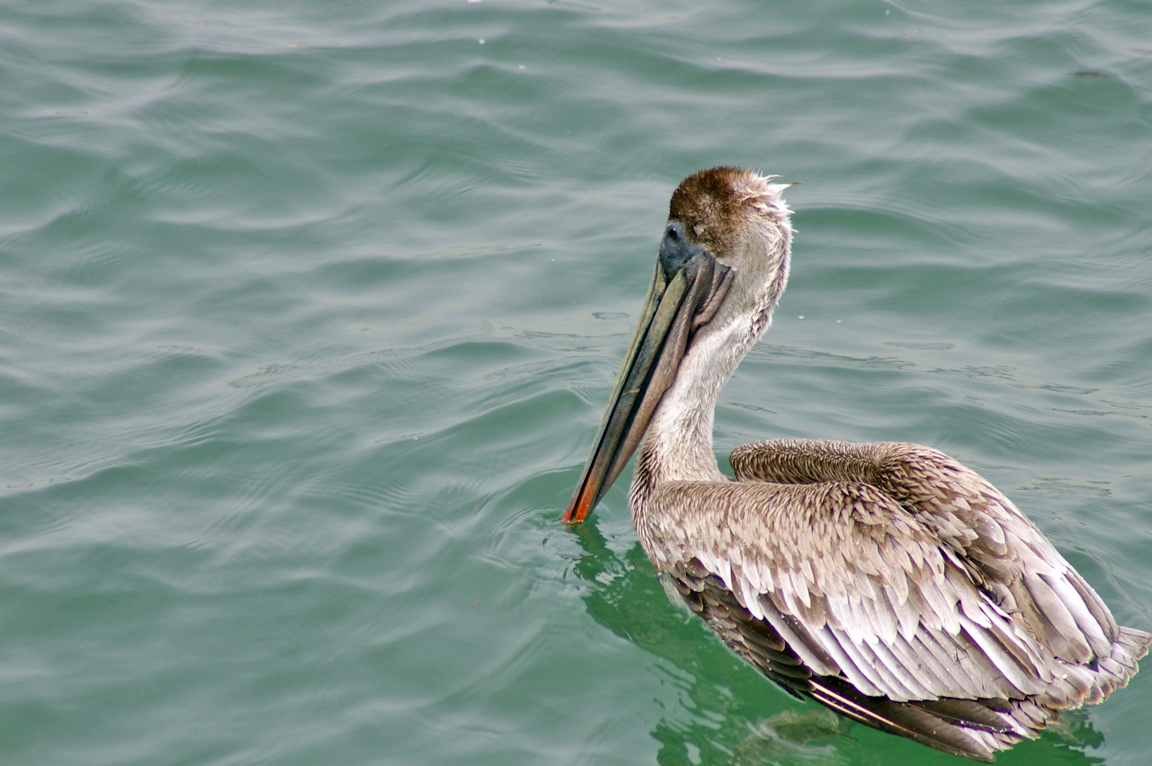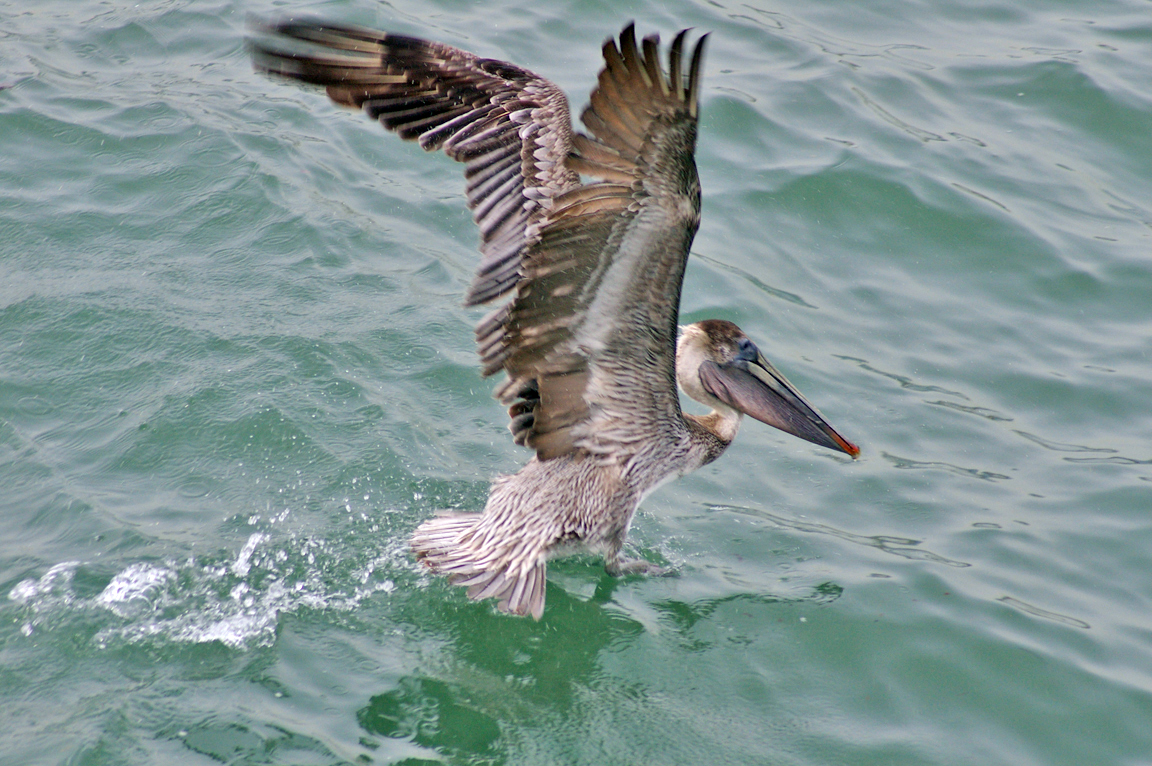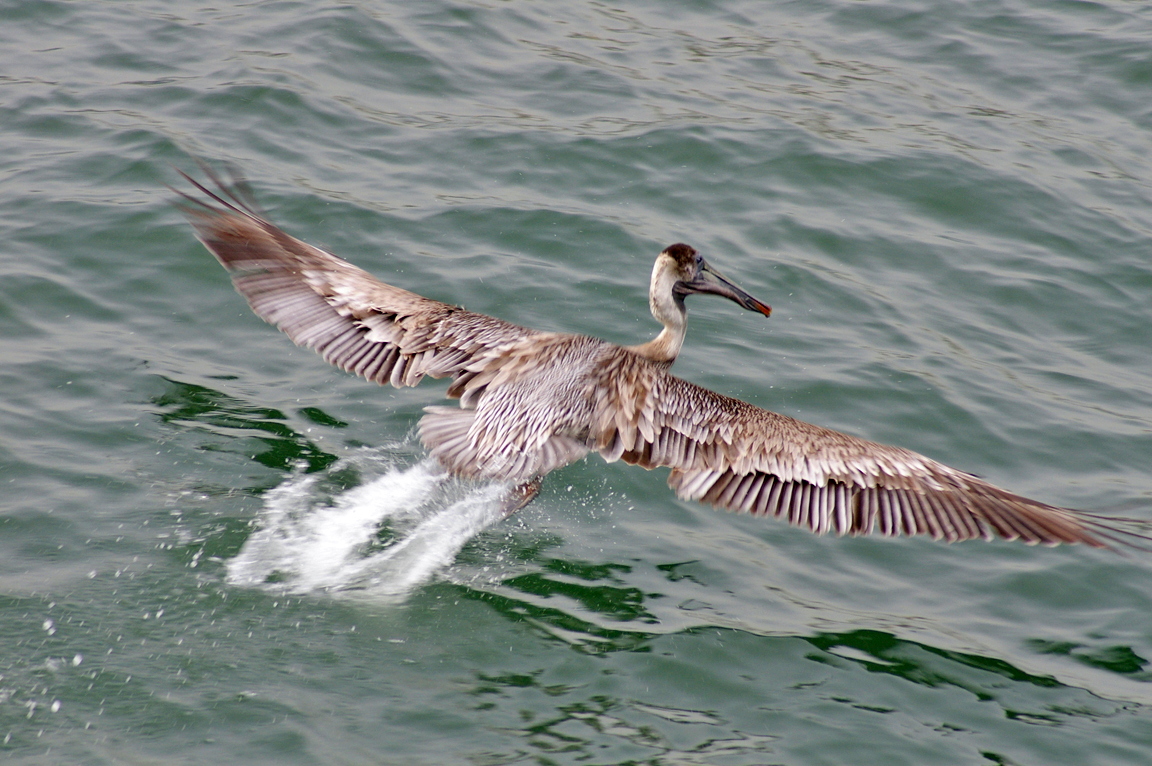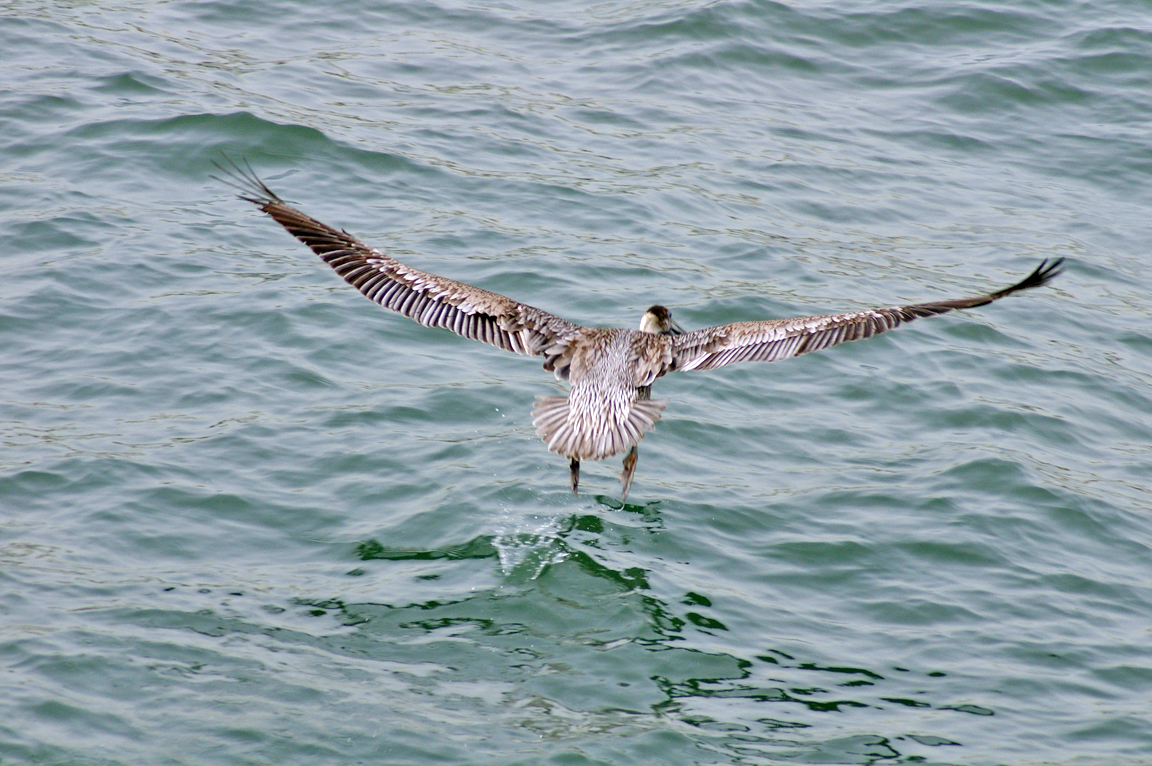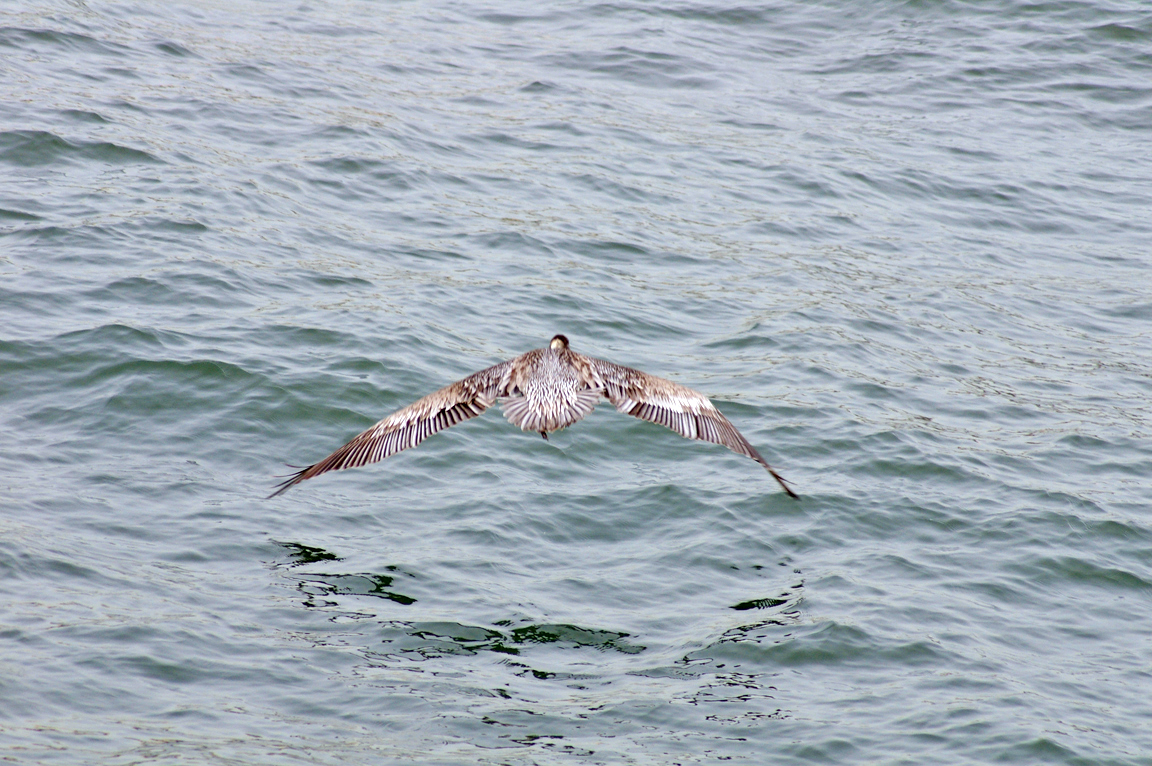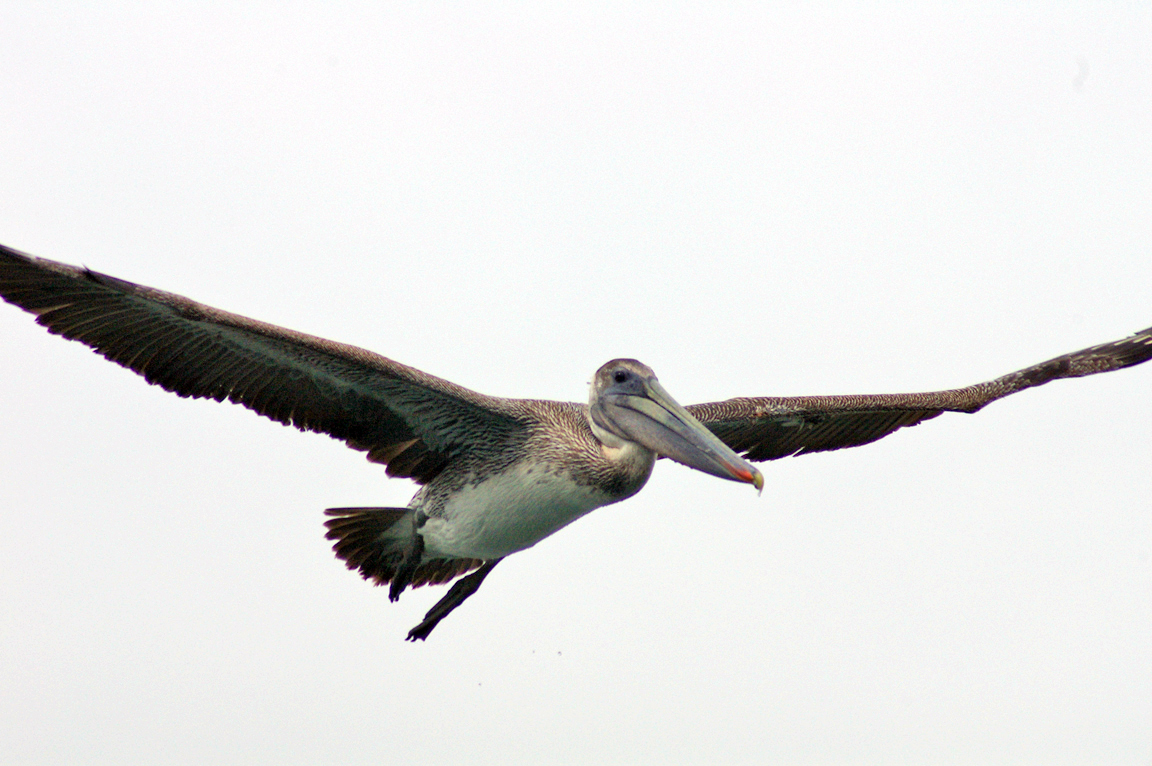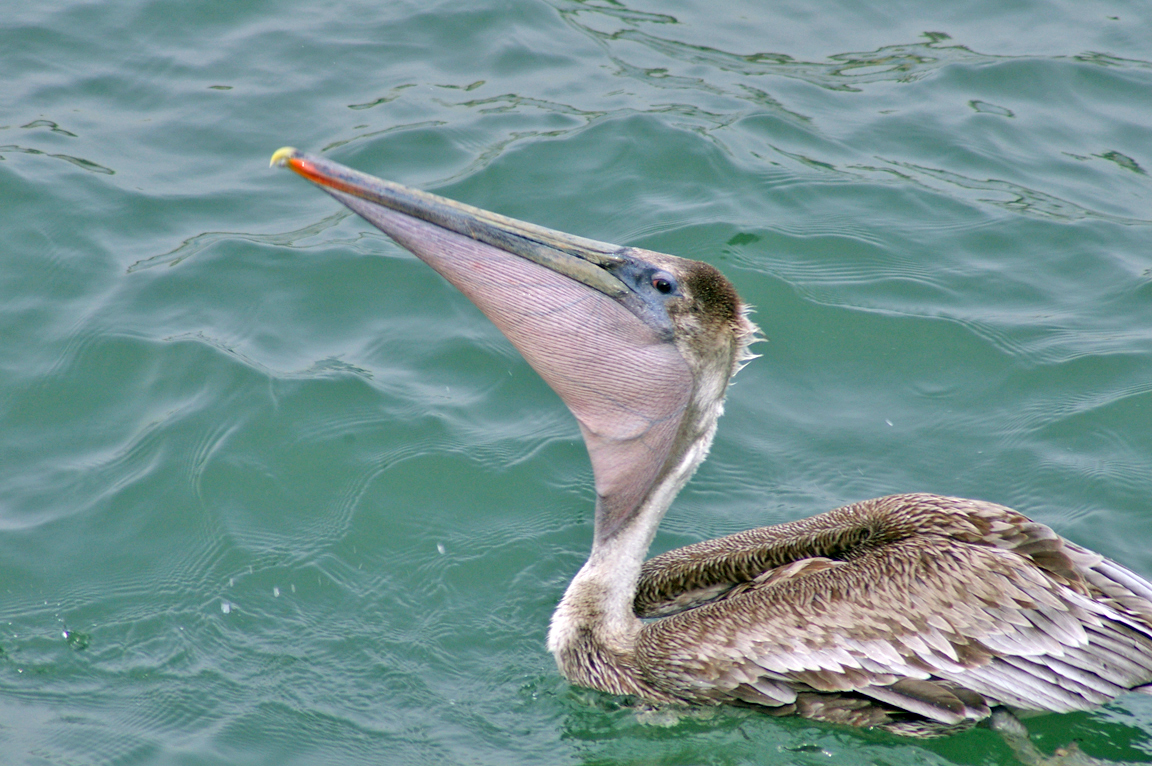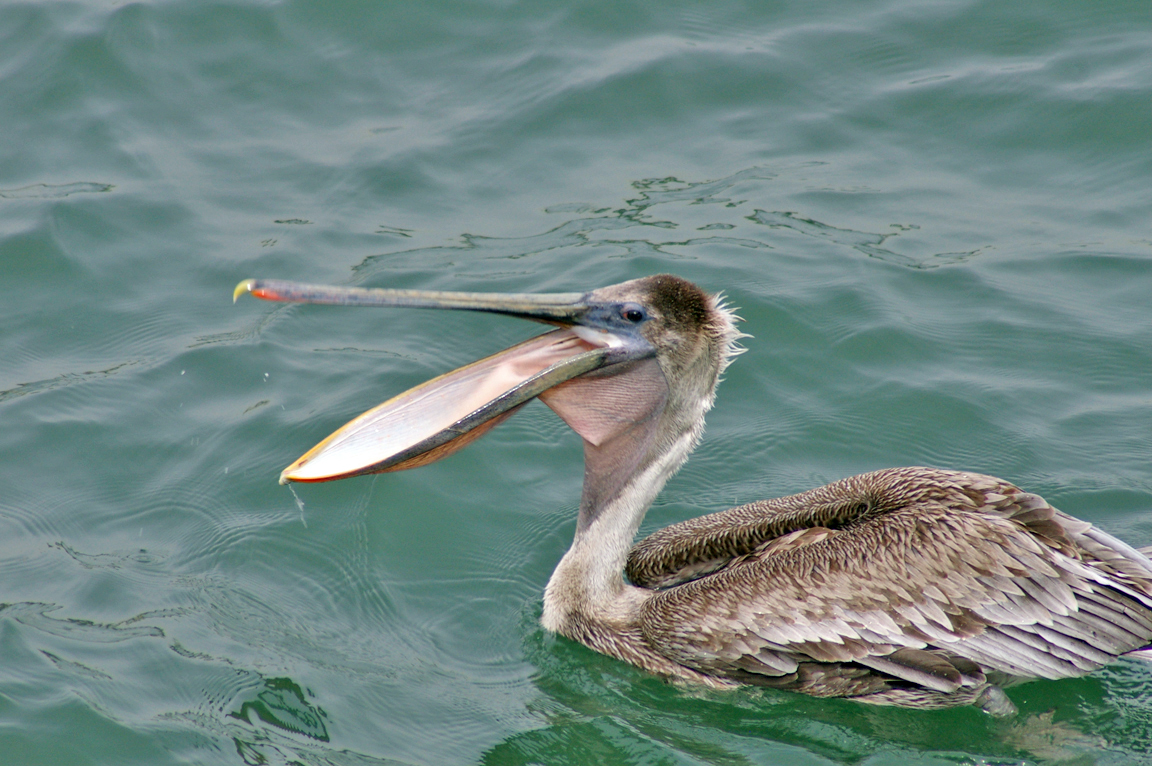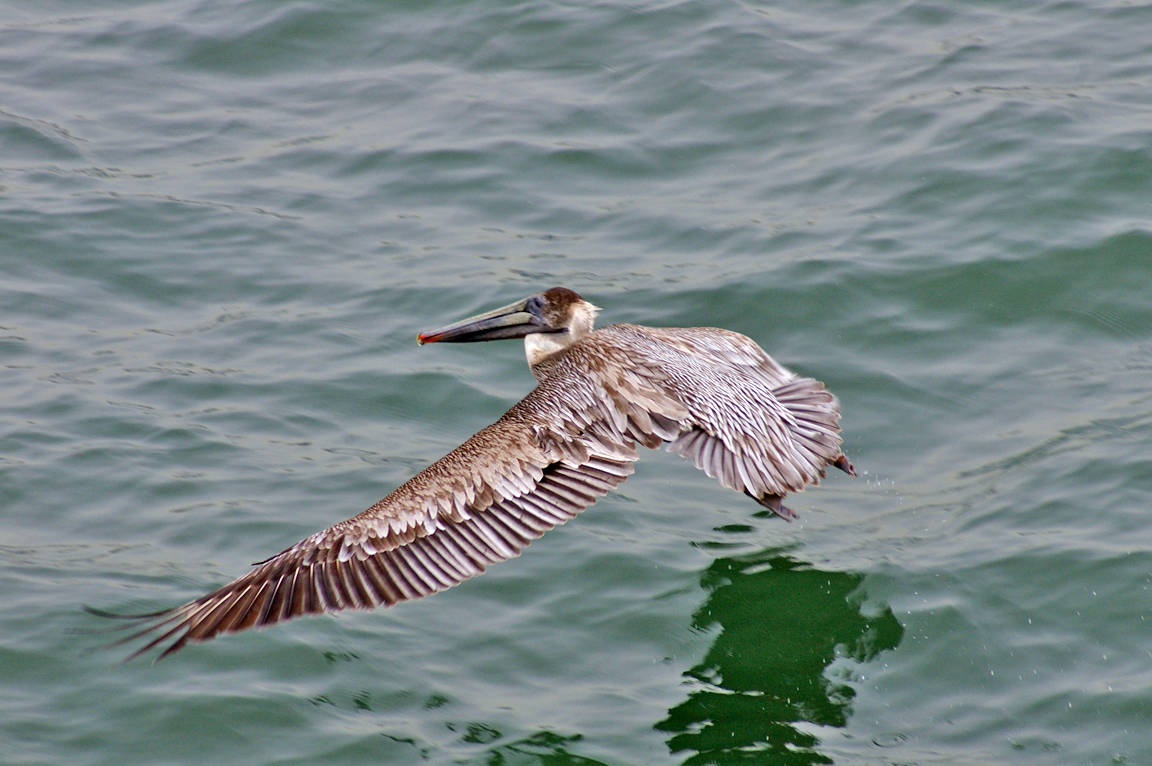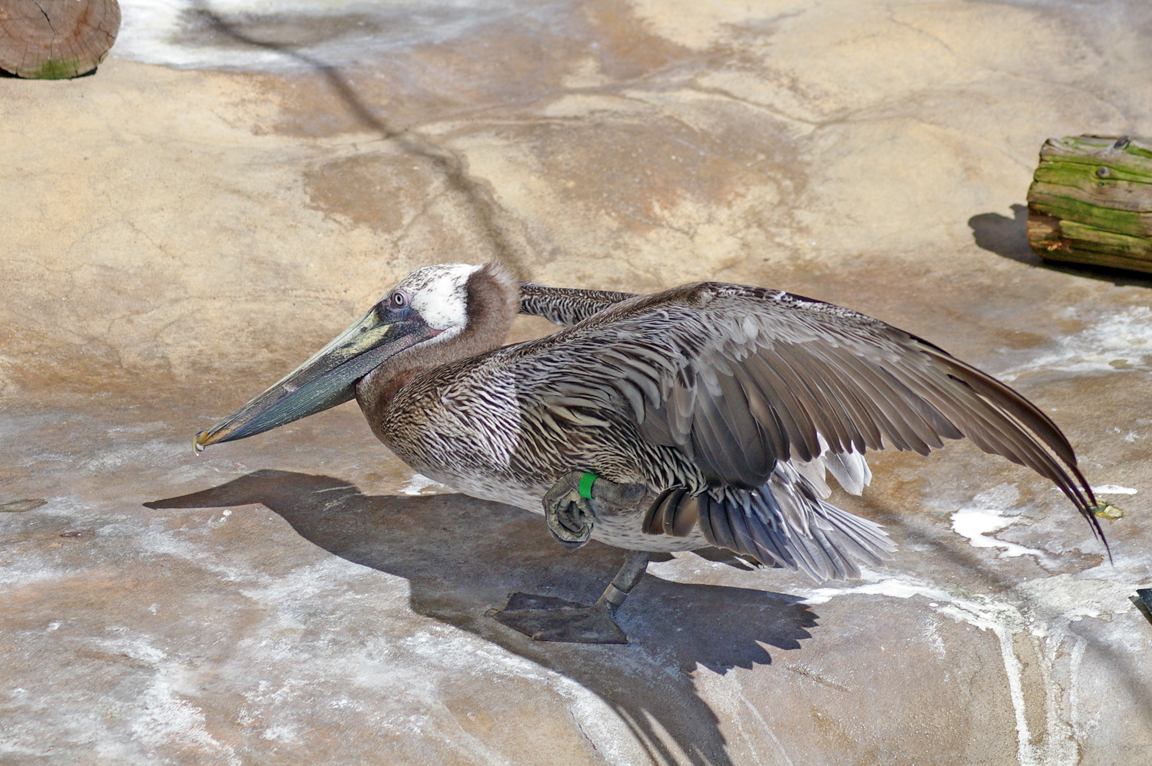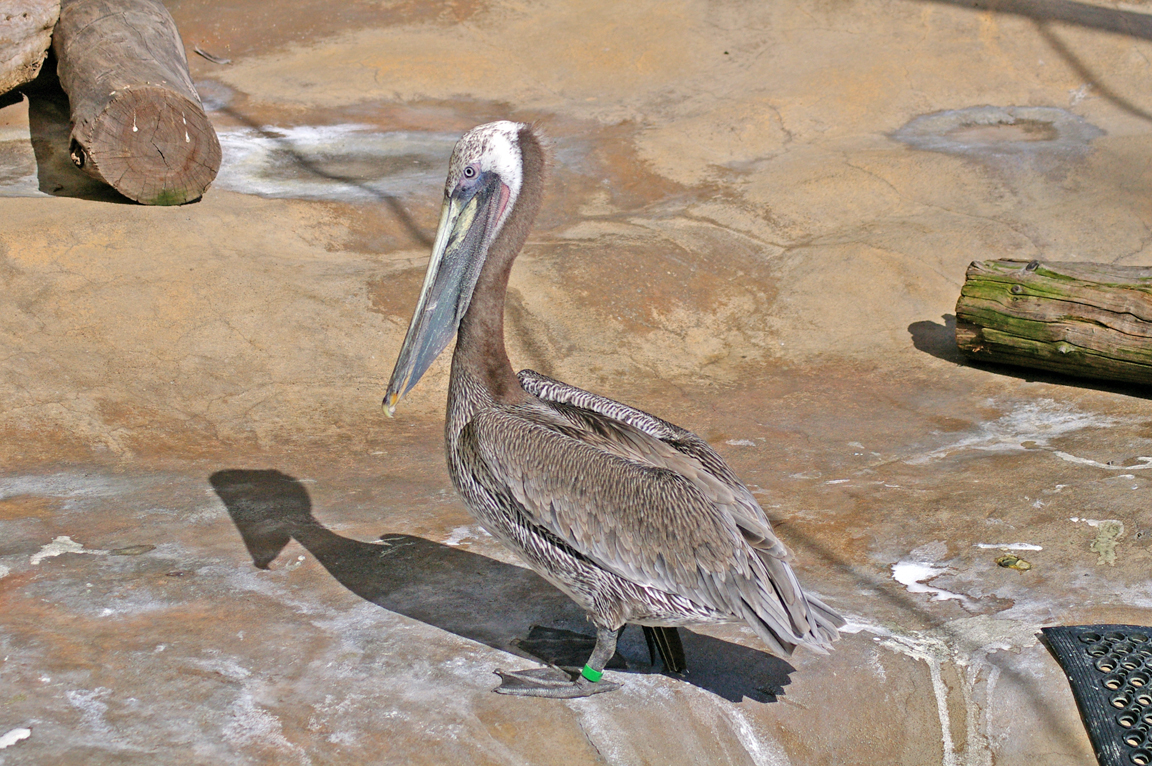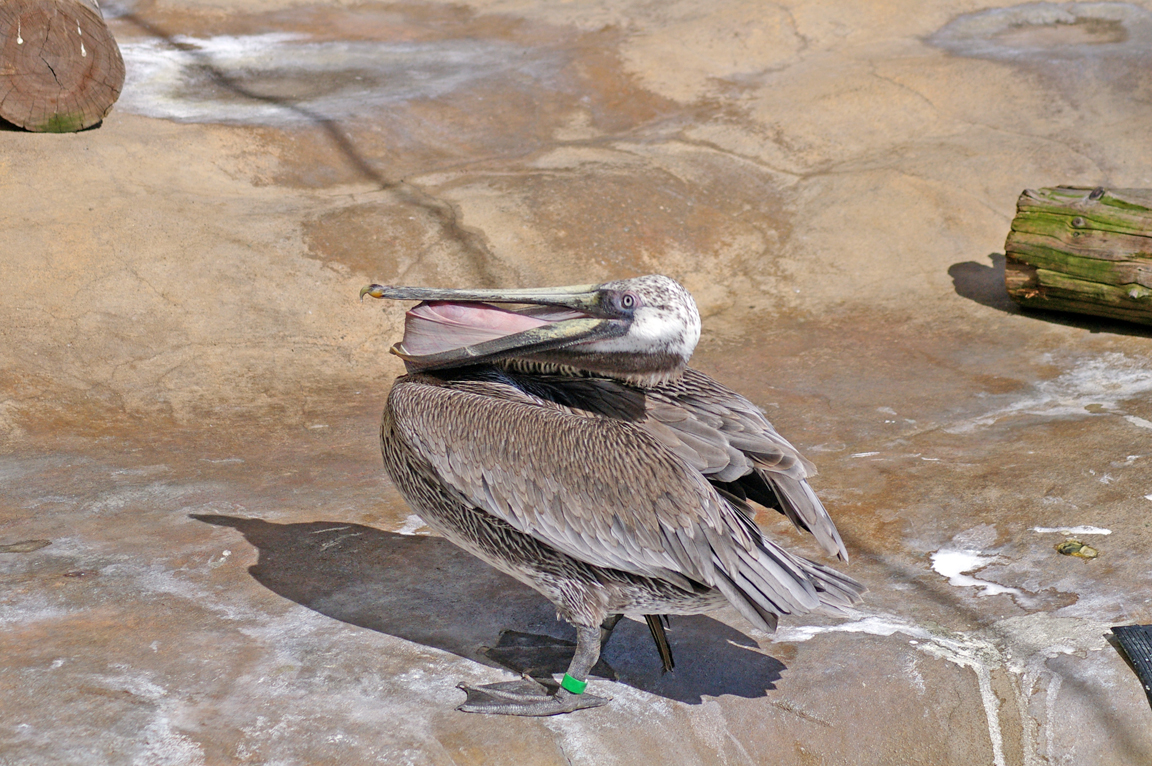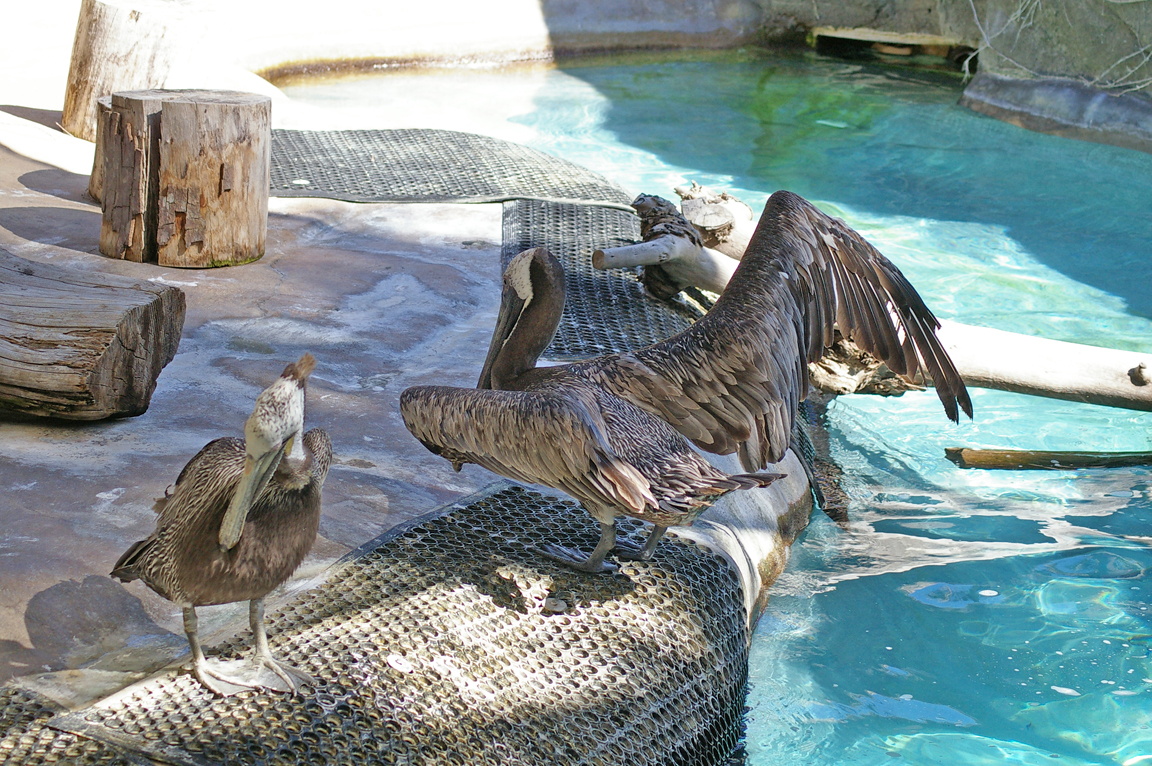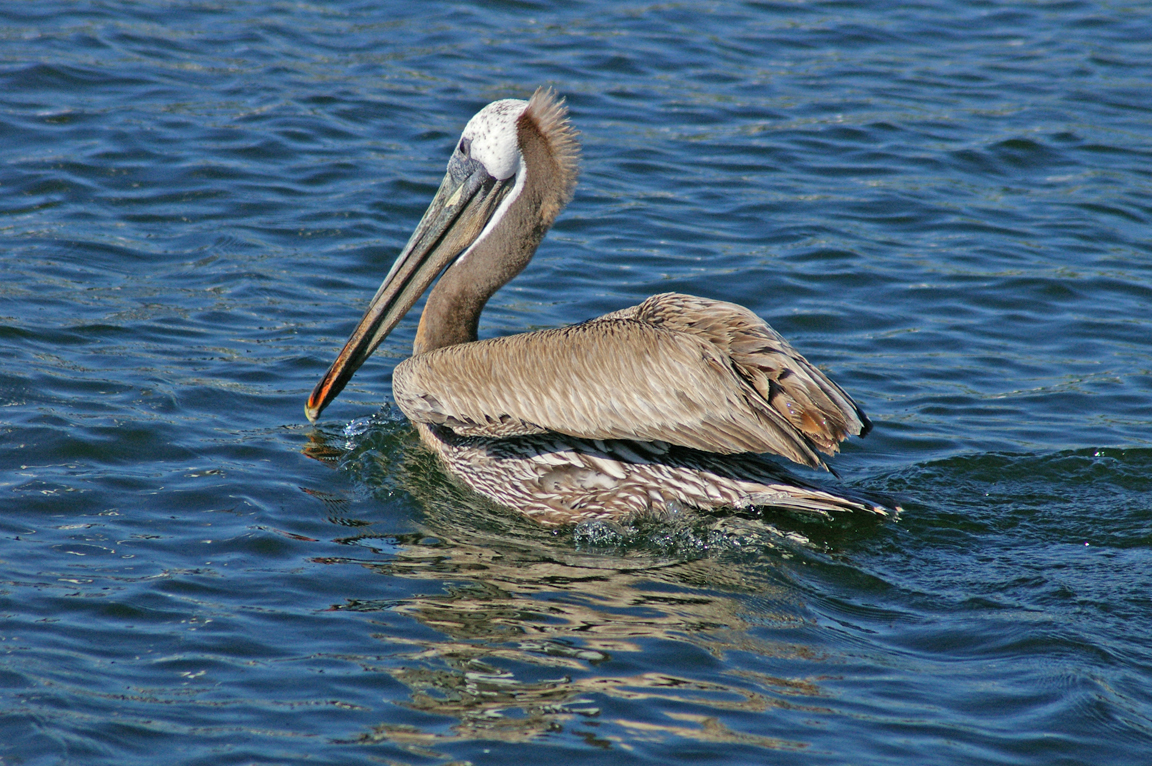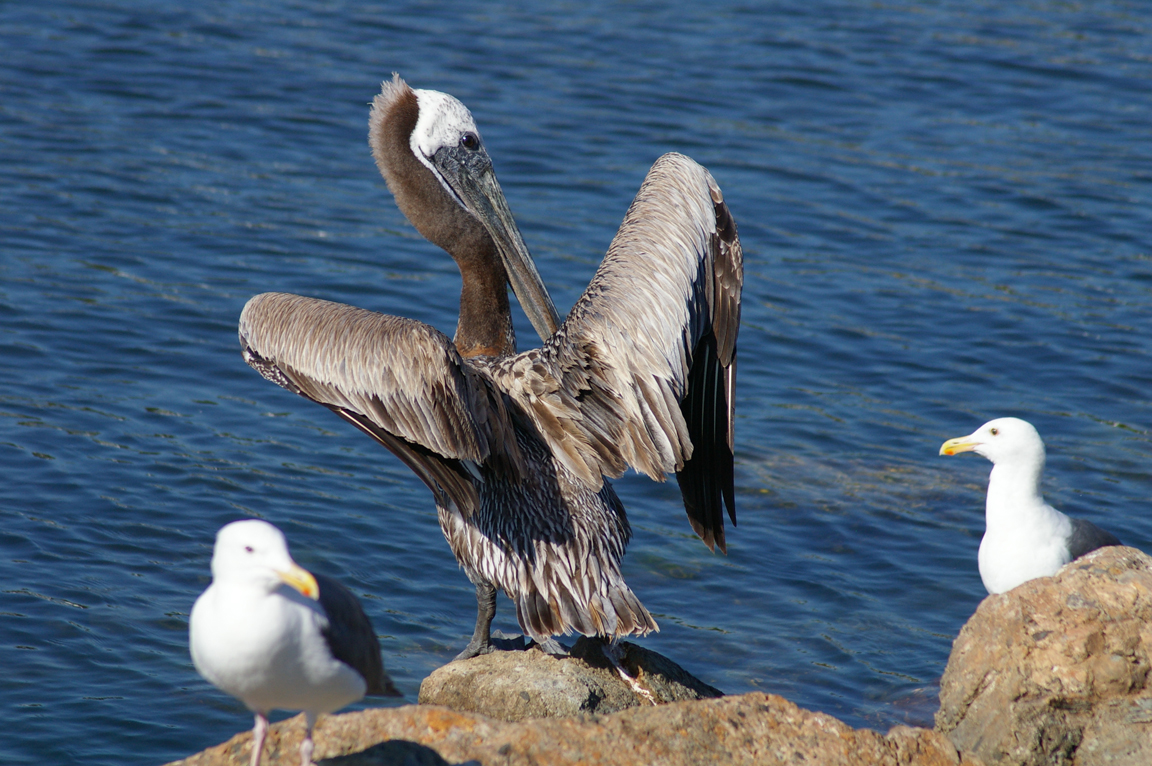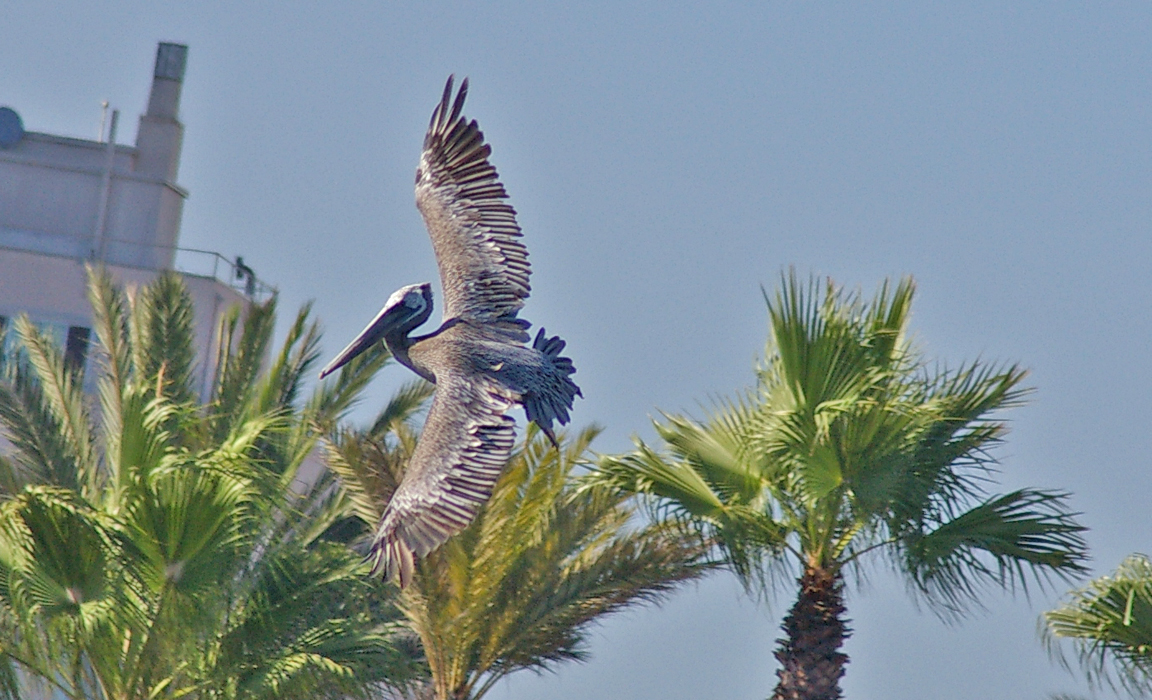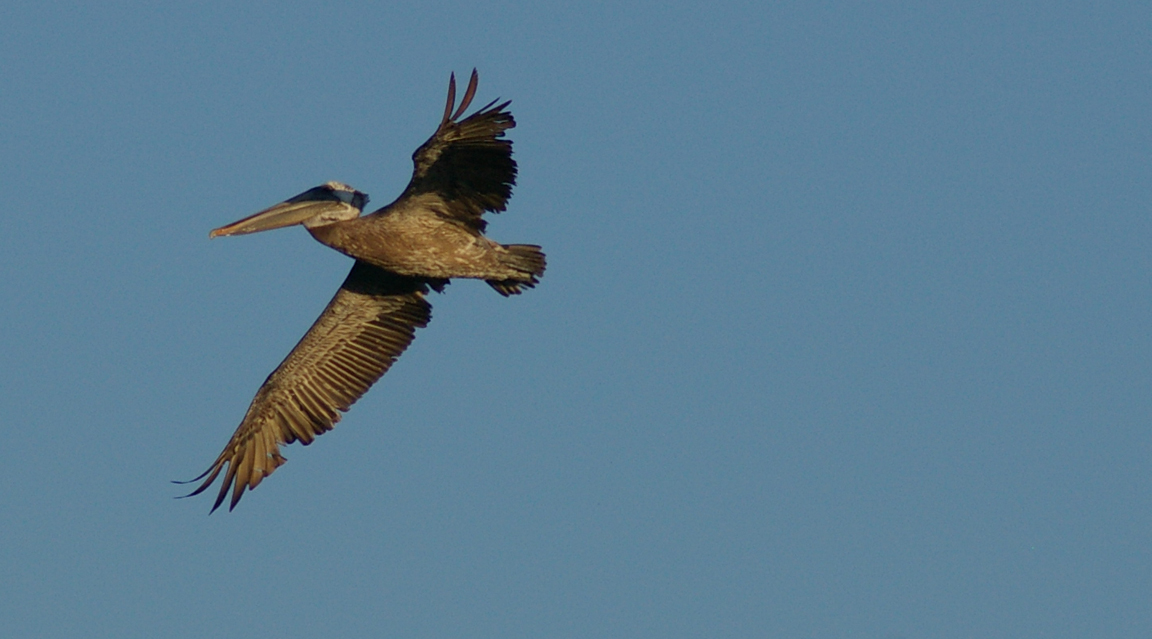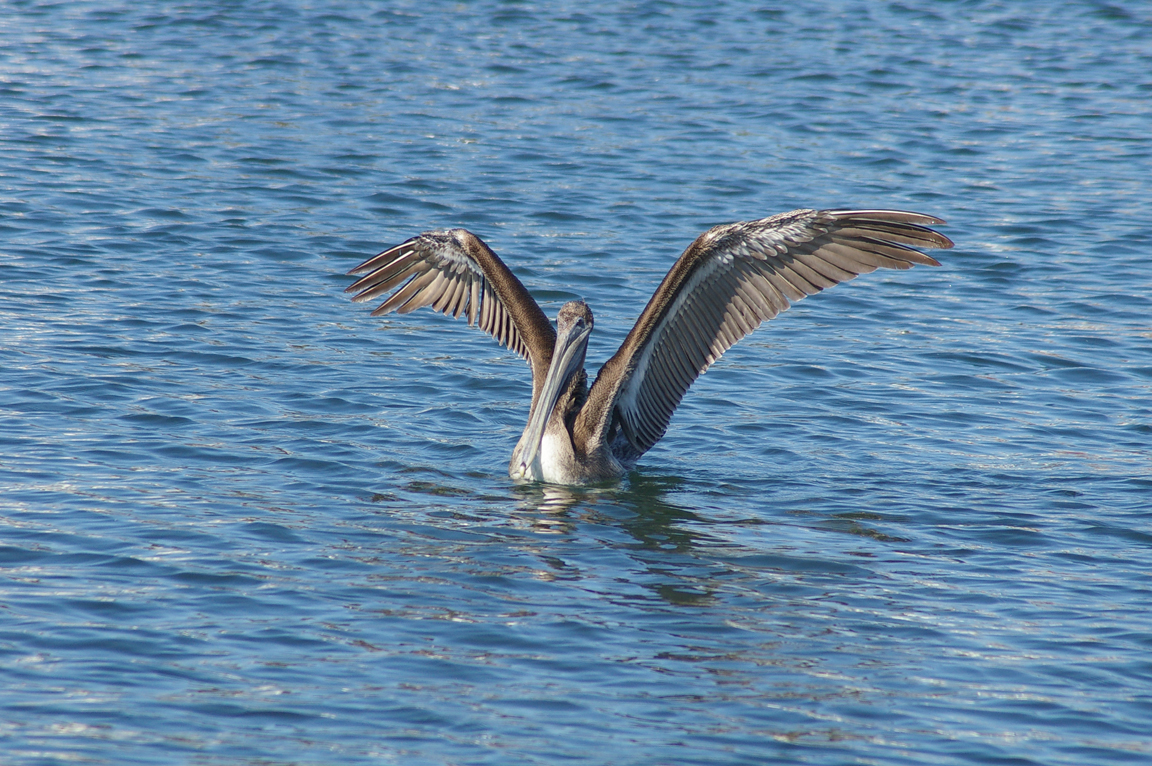|
|
|
 |
Brown Pelican
|
| Pelecanus occidentalis | |
Unique among the world's seven species of pelicans, the Brown Pelican is found along the ocean shores and not on inland lakes. It is the only dark pelican, and also the only one that plunges from the air into the water to catch its food.
Interesting Information
While the Brown Pelican is draining the water from its bill after a dive, gulls often try to steal the fish right out of its pouch. They sometimes even perch on the pelican's head or back and reach in. The pelican itself, however, is not above stealing fish from other seabirds. It also follows fishing boats and hangs around piers for handouts.
The Brown Pelican frequently lowers its head onto its shoulders with the bill open, pulls its head back, and stretches the pouch over its throat and neck. The exposed neck looks like a large lump sticking up out of the pouch.
Unlike most birds, which warm their eggs with the skin of their breasts, pelicans incubate their eggs with their feet. They hold the eggs under the webs that stretch from the front toes to the hind toe, essentially standing on the eggs to warm them. This peculiar incubation method made them vulnerable to the effects of the pesticide DDT. The DDT made the eggshells thin, and the incubating parents frequently cracked their eggs.
The Peruvian race of the Brown Pelican, found along the Pacific Coast of South America from southern Ecuador to Chile, is sometimes considered a separate species. It is larger than the other races, has fine white streaking on the feathers of the underparts, and has a blue pouch in the breeding season. Otherwise, it looks and acts like a Brown Pelican, found in similar coastal environments and plunge-diving for food.
Description
Adult Description
-
Size: 100-137 cm (39-54 in)
-
Wingspan: 200 cm (79 in)
-
Weight: 2000-5000 g (70.6-176.5 ounces)
-
Large, dark waterbird.
-
Long bill with extensible pouch.
-
Legs short.
-
Body large and heavy.
-
Feet webbed.
-
Wings long and broad.
-
Tail short.
-
Soars close to water surface.
-
Dives from the air into the water.
-
Foot webbing includes the hind toe.
Sex Differences
Sexes look alike; males slightly larger.
Immature
Juvenile dirty brown all over with white belly, pale line along middle of underwing. Bill gray-brown. Yearling similar, but more gray on back and with some white feathers on sides of head and neck. Bill becomes paler and may have some yellow or orange.
Nonbreeding (Basic) plumage
Head pale yellow. Neck white.
Adult Breeding (Alternate) plumage
Forehead and crown light yellow. Back and sides of neck dark brown. Back and rump striped silver and brown. Wings gray to gray-brown. White stripe along side of neck. Chest and belly black-brown. Shoulders and top of chest striped silver and black. White or yellow triangle at base of throat. Yellow head feathers become white during nesting. Bill pale at base, darker farther out, and yellow at tip. Throat pouch red (on West Coast) or green (East Coast) at base, gray-green farther out.
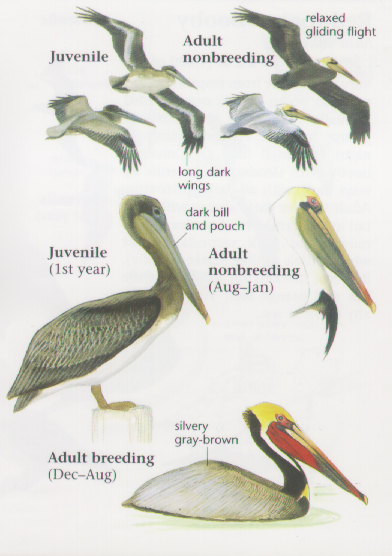
Photo taken from: The Sibley Field Guide by David Allen Sibley
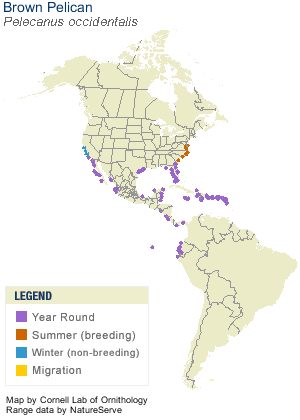
© 2003 Cornell Lab of Ornithology
|
Habitat |
|
|
Behavior |
|
Sights prey from air and plunges into water head-first. Traps fish in extended pouch. Drains water out the sides of the bill, and then swallows the fish. |
|
Food |
|
Fish and some marine invertebrates. |
Taxonomy
| Kingdom: | Animalia |
| Phylum: | Chordata |
| Subphylum: | Vertebrata |
| Class: | Aves |
| Order: | Pelecaniformes |
| Family: | Pelecanidae |
| Genus: | Pelecanus |
| Species: | Pelecanus occidentalis |
| Subspecies: | Pelecanus occidentalis Linnaeus |
| Pelecanus occidentalis californicus | |
| Pelecanus occidentalis carolinensis | |
| Pelecanus occidentalis occidentalis | |
| Pelecanus occidentalis thagus |
Similar Species |
|
White Pelican is bright white, with black along the back wing edge, and a bright orange bill and pouch. Gulls have more pointed and narrower wings. Cormorants are darker and have a long thin neck and a long tail. |
|
Bird Sound |
|
Generally silent away from nesting colony. Nestling squawks for food; adults have low, hoarse display calls. |
|
Eggs look like this |
|
Photo taken from: ARCTOS Collaborative Collection Management Solution |
Videos
Brown Pelican
Up close and personal
Brown Pelican
Dive-bombing fish near the Santa Monica pier #1
Brown Pelican
Dive-bombing fish near the Santa Monica pier #2
Brown Pelican
Dive-bombing fish near the Santa Monica pier #3

